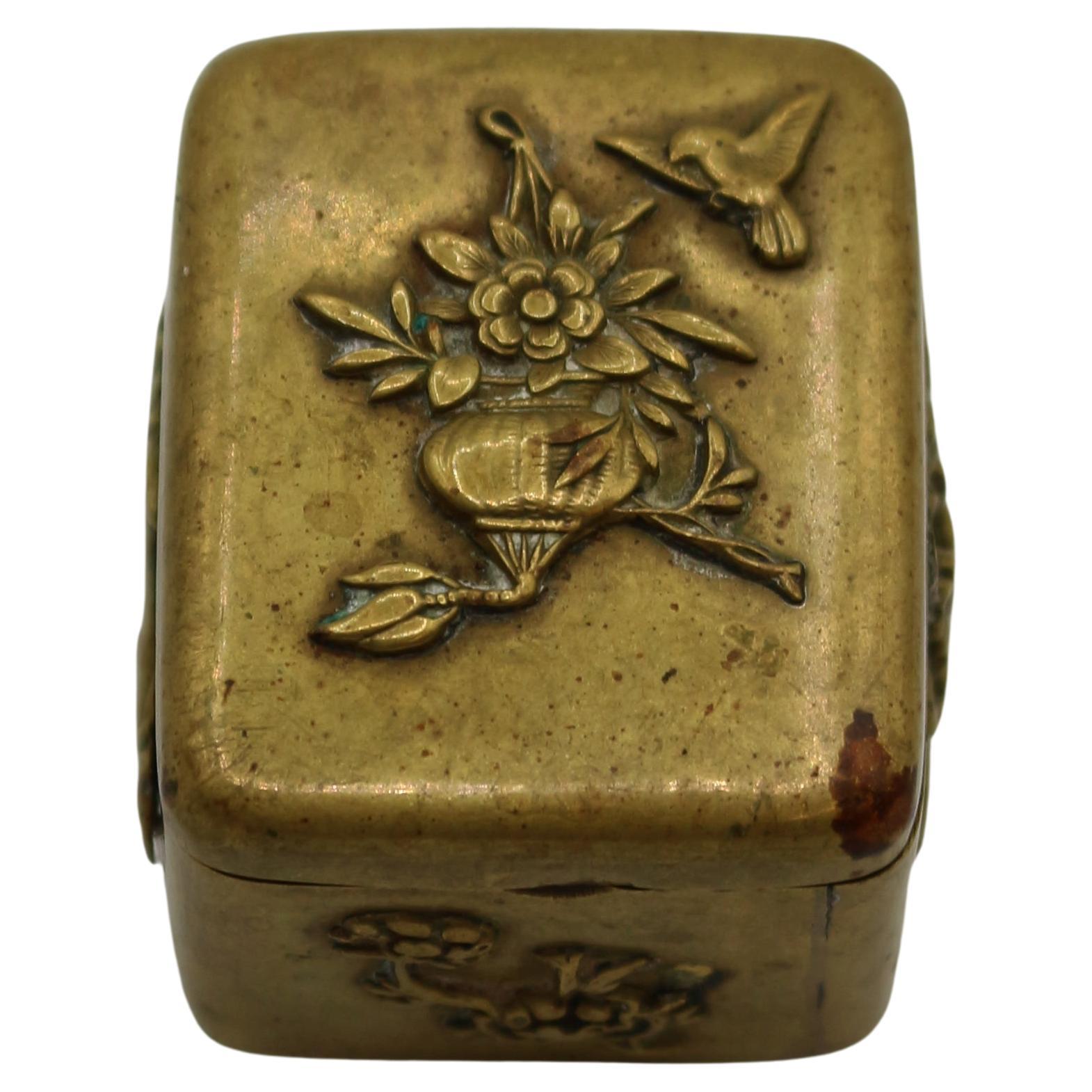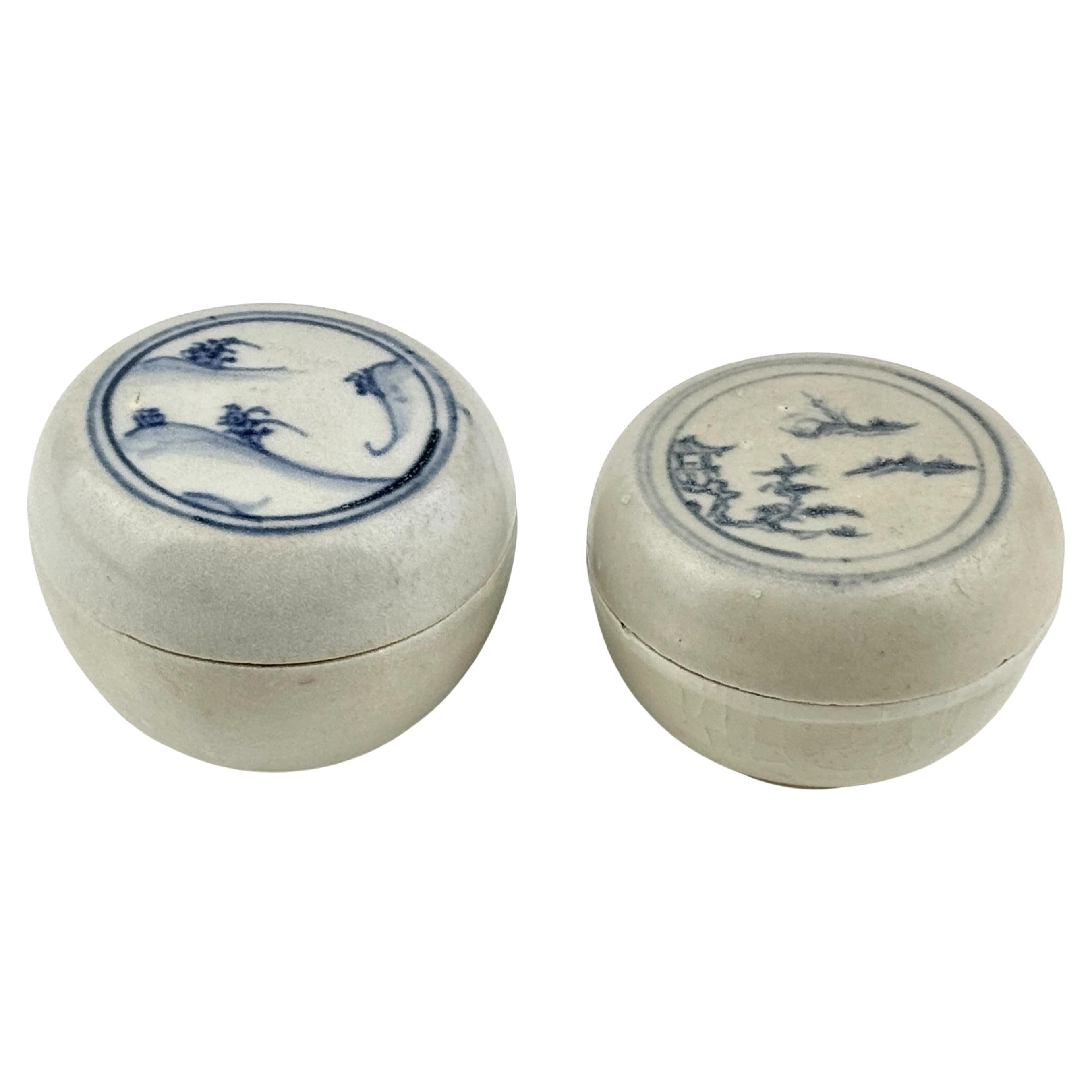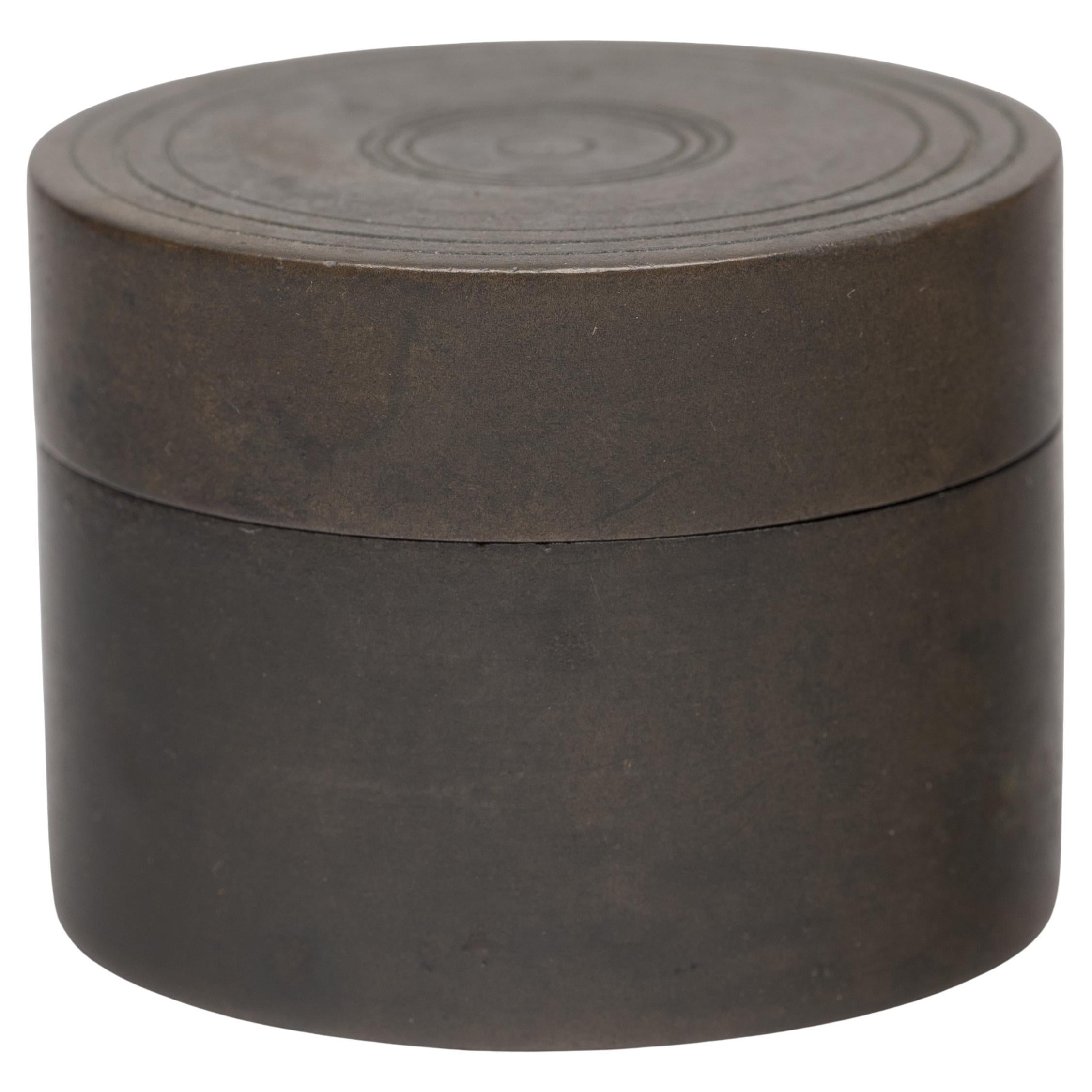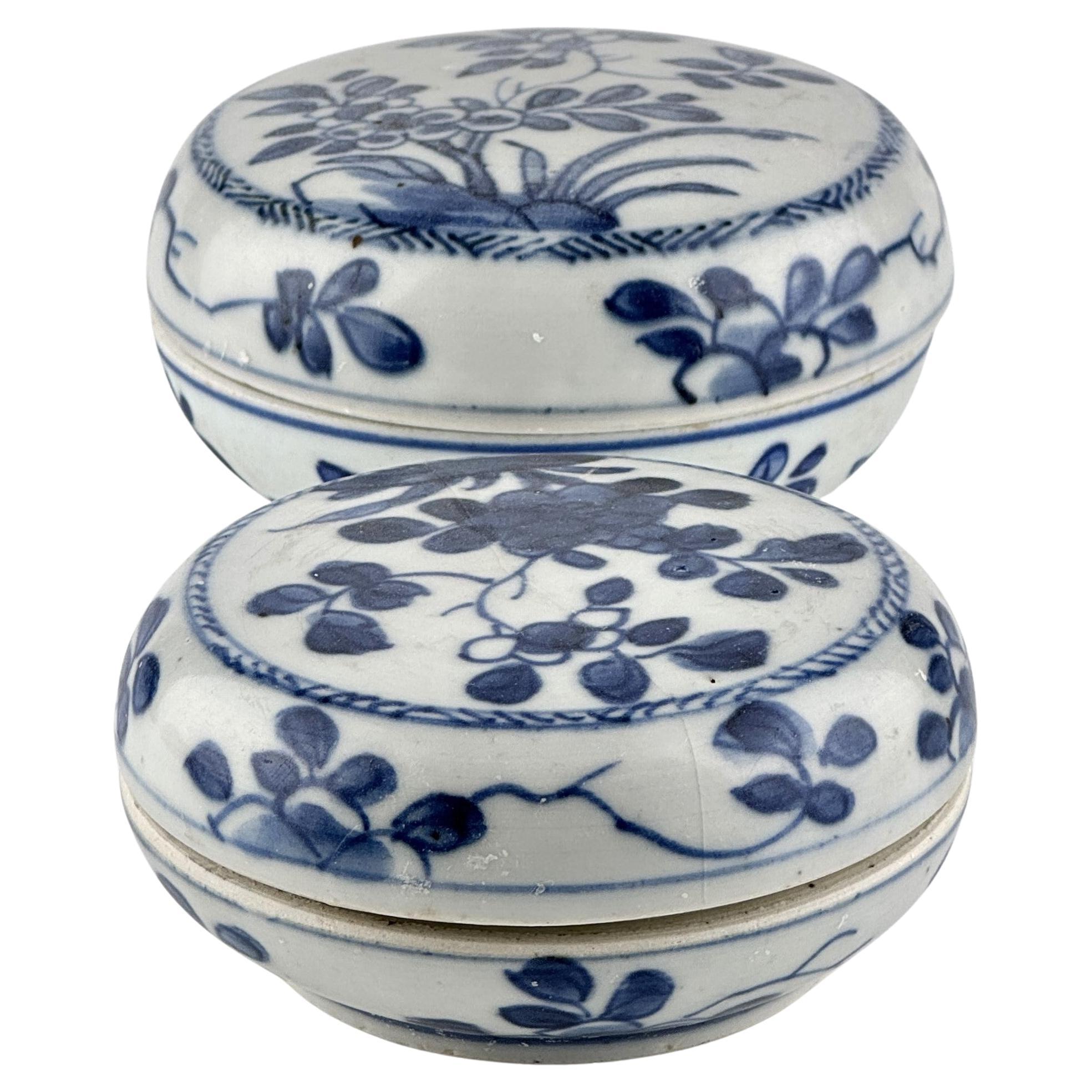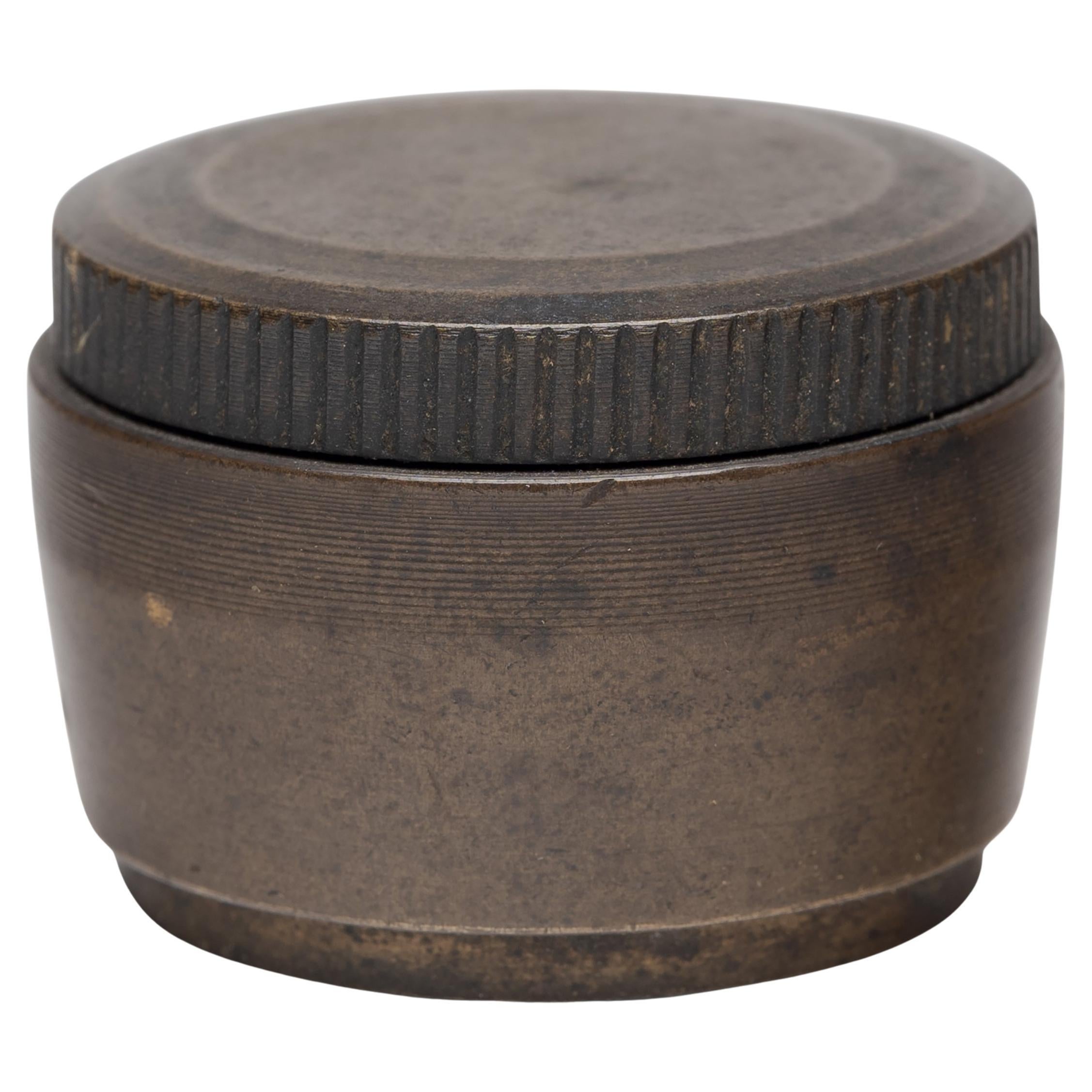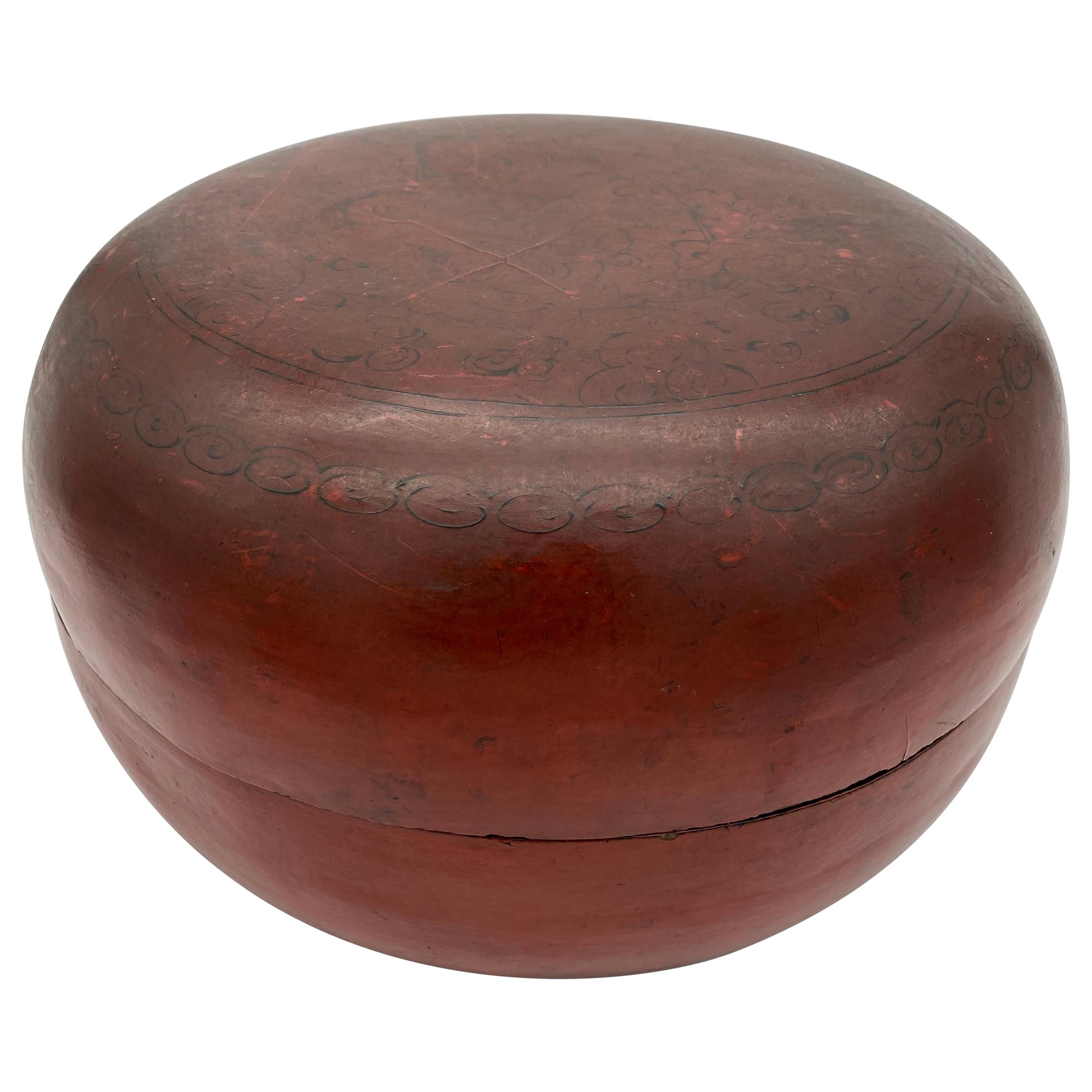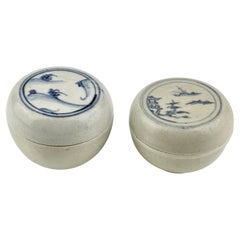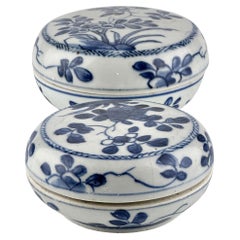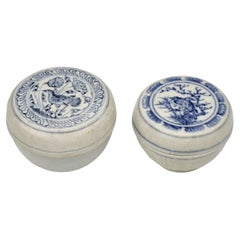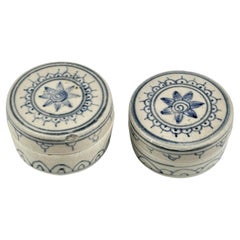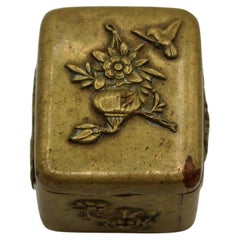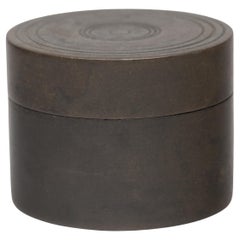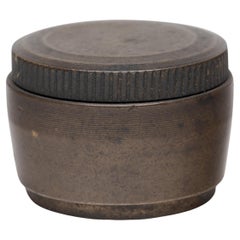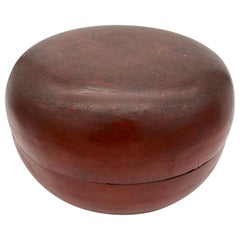Items Similar to Brown-Glazed Moulded Box And Cover, Fujian Kiln, Yuan-Ming Dynasty
Want more images or videos?
Request additional images or videos from the seller
1 of 10
Brown-Glazed Moulded Box And Cover, Fujian Kiln, Yuan-Ming Dynasty
$2,100per set
$3,000per set30% Off
£1,593.43per set
£2,276.33per set30% Off
€1,821.95per set
€2,602.78per set30% Off
CA$2,933.13per set
CA$4,190.19per set30% Off
A$3,261.24per set
A$4,658.92per set30% Off
CHF 1,702.84per set
CHF 2,432.63per set30% Off
MX$39,697.26per set
MX$56,710.37per set30% Off
NOK 21,727.51per set
NOK 31,039.29per set30% Off
SEK 20,357.63per set
SEK 29,082.33per set30% Off
DKK 13,597.52per set
DKK 19,425.03per set30% Off
Shipping
Retrieving quote...The 1stDibs Promise:
Authenticity Guarantee,
Money-Back Guarantee,
24-Hour Cancellation
About the Item
The circular domed cover moulded with a brown glaze that falls short of the straight foot. The pattern on the left features a central circular design with simple shapes and lines carved inside, surrounded by small oval decorations in a ring. On the outer edge, thin and closely spaced lines, resembling comb patterns, are arranged in a circular fashion. The design on the right features a raised floral motif at the center with layered petal-like patterns, surrounded by a thin circular border accented with a scalloped edge, all set on a glossy brown surface.
These Fujian boxes, exported to Southeast Asia, competed with Vietnamese variants. Some speculate they may date back to the Yuan dynasty, with examples of both Chinese and Vietnamese models found in the museum in Haiphong, Vietnam.
Period: Yuan-Ming Dynasty
Region: Fujian, China
Medium: Pottery
Type: Covered Box
Condition : Excellent
Dimension : 7cm (Diameter) x 4cm(Height)
Provenance : Acquired in early 2000s from Vietnam
About the Seller
4.8
Gold Seller
Premium sellers maintaining a 4.3+ rating and 24-hour response times
Established in 1999
1stDibs seller since 2023
38 sales on 1stDibs
Typical response time: <1 hour
- ShippingRetrieving quote...Shipping from: seoul, Korea South
- Return Policy
Authenticity Guarantee
In the unlikely event there’s an issue with an item’s authenticity, contact us within 1 year for a full refund. DetailsMoney-Back Guarantee
If your item is not as described, is damaged in transit, or does not arrive, contact us within 7 days for a full refund. Details24-Hour Cancellation
You have a 24-hour grace period in which to reconsider your purchase, with no questions asked.Vetted Professional Sellers
Our world-class sellers must adhere to strict standards for service and quality, maintaining the integrity of our listings.Price-Match Guarantee
If you find that a seller listed the same item for a lower price elsewhere, we’ll match it.Trusted Global Delivery
Our best-in-class carrier network provides specialized shipping options worldwide, including custom delivery.More From This Seller
View AllTwo Annamese Miniature Covered Boxes with Scenary Motif, 15th century, Le Dynast
Located in seoul, KR
Vietnamese covered boxes with representative scenary designs. Both are made of cream-colored base and blue designs, typical of Annamese pottery. These shared characteristics highligh...
Category
Antique 15th Century and Earlier Vietnamese Ming Antiquities
Materials
Stoneware
$954 Sale Price / set
40% Off
Covered Boxes from Ca Mau Ship, Qing Dynasty, Yongzheng Reign
Located in seoul, KR
The central design features botanical motifs, with fully bloomed flowers and branches intricately depicted. The rim of the lid is encircled by a decorative band resembling a twisted ...
Category
Antique 18th Century Vietnamese Qing Antiquities
Materials
Ceramic
$1,625 Sale Price / set
35% Off
Two Annamese Covered Boxes with Bird and Plant Motif, 15th century, Le Dynasty
Located in seoul, KR
Vietnamese covered boxes with representative bird and plant designs. Both are made of cream-colored base and blue designs, typical of Annamese pottery. These shared characteristics h...
Category
Antique 15th Century and Earlier Vietnamese Decorative Boxes
Materials
Ceramic, Stoneware
Two Annamese Miniature Covered Boxes with Flower, 15th century, Le Dynasty
Located in seoul, KR
Vietnamese covered boxes with star like flower designs. Both are made of cream-colored base and blue designs, typical of Annamese stoneware.
Dates : 15th century Le Dynasty
Region :...
Category
Antique 15th Century and Earlier Vietnamese Antiquities
Materials
Stoneware
$1,260 Sale Price / set
30% Off
Two Annamese Mid-size Lidded Boxes with flower design, 15th century, Le Dynasty
Located in seoul, KR
Vietnamese stoneware cover boxes. These pieces exhibit a relatively vivid blue color compared to similar works from Hoi An hoard. Additionally, they are relatively larger in size amo...
Category
Antique 15th Century and Earlier Vietnamese Antiquities
Materials
Stoneware
$1,074 Sale Price
40% Off
Rare Annamese Stoneware Bowls with Brown-Green Glaze, Vietnam, 14th–15th Century
Located in seoul, KR
This finely matched pair of Annamese stoneware bowls exemplifies the refined ceramic artistry of Đại Việt (medieval Vietnam) during the 14th to 15th century. Each bowl is delicately ...
Category
Antique 15th Century and Earlier Vietnamese Antiquities
Materials
Stoneware
$1,596 Sale Price / set
30% Off
You May Also Like
Mid-19th Century Japanese Meiji Period Bronze Stamp Box
Located in Chapel Hill, NC
Mid-19th century Japanese Meiji period bronze stamp box. Applied castings of a hanging flower basket with bird, recumbent stag and flowers. Measures: 1 1/...
Category
Antique Mid-19th Century Japanese Meiji Decorative Boxes
Materials
Bronze
$160 Sale Price
28% Off
Chinese Bronze Opium Box, c. 1900
Located in Chicago, IL
A petite bronze canister once used to store a smoker's personal supply of opium paste. A keepsake from a bygone era, the small box dates to the early 20th century and provided an air...
Category
Early 20th Century Chinese Qing More Asian Art, Objects and Furniture
Materials
Bronze
Chinese Bronze Opium Box, c. 1900
Located in Chicago, IL
A petite bronze canister once used to store a smoker's personal supply of opium paste. A keepsake from a bygone era, the small box dates to the early 20th century and provided an air...
Category
Early 20th Century Chinese Qing More Asian Art, Objects and Furniture
Materials
Bronze
19th Century Chinese Red Lacquer Box
Located in Brea, CA
Chinese red lacquer box. Measures: 11.5 x 11.5 x 6.5 inch.
Category
Antique Late 19th Century Chinese Qing Lacquer
Materials
Lacquer
Japanese Box with Cover, Edo Period, 19th Century
Located in Stockholm, SE
A small box with lid. Earthenware glazes in green and white colours. Mid-19th Century. The lid has a motive of a stylized swan.
The lid with a rest...
Category
Antique 19th Century Japanese Ceramics
Materials
Ceramic
$719 Sale Price
20% Off
Qing Dynasty Hinged Box with Brass Hardware and Weathered Patina
Located in Yonkers, NY
A Qing Dynasty period hinged wooden box from the 19th century with brass hardware and nicely weathered patina. Crafted during the Qing Dynasty in the 19th century, this wooden box ca...
Category
Antique 19th Century Chinese Qing Decorative Boxes
Materials
Brass
More Ways To Browse
Antique Brown Glaze
Antique Moulds
Used Kiln Furniture
Antique Kilns
Small Asian Box
Chinese Ming Pottery
Ming Dynasty Glazed
Ming Dynasty Pottery
Ming Box
Chinese Comb
Vietnamese Carved Furniture
Jingdezhen Teapot
Northern Qi
Song Dynasty Funerary
Used Polo Saddle
Vintage Asian Parasol
Antique Rooster Statue
Burma Shan Period 16th Century
